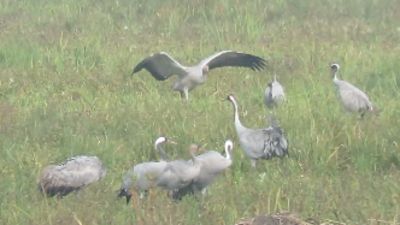Comeback kings: Increase in numbers of rare bird thanks to Norfolk conservation effort

Cranes, which became extinct in the UK 400 years ago, have continued their recent comeback with a new high of 64 pairs recorded in a survey in 2020.
The common crane, which stands 4ft tall and is famous for its dancing courtship displays, vanished from this country in the 1600s as a result of hunting and a decline in their wetland habitat.
But thanks to the efforts of the Great Crane Project, a partnership between the RSPB, Wildfowl and Wetlands Trust and the Pensthorpe Conservation Trust in Norfolk - numbers are once more on the rise.
White-tailed eagles spread their wings in second year of English reintroduction scheme
North Norfolk tern colony enjoys best breeding season for 26 years
Colchester Zookeepers take on lockdown stock take behind closed doors
In 1979 a small number of wild cranes returned to the UK and established themselves in an area of the Norfolk Broads, and slowly spread to other areas of eastern England with help from conservationists who worked to improve the habitat they need.
Wild cranes are now breeding in the Norfolk Broads, East Anglian Fens, Yorkshire and east Scotland as well as in south-west England, the conservationists said.
The latest survey shows a record 64 pairs across the UK in 2020, which produced 23 chicks. With other birds not in breeding pairs, conservationists said the population of cranes in the UK was now thought to be more than 200 birds.
Damon Bridge, chairman of the UK Crane Working Group said:
Andrew Stanbury, RSPB conservation scientist, added:
"If we want to see this amazing achievement repeated across the UK, governments must take action to designate the most important sites for this iconic species as part of the UK's protected area network."
Conservationists want to see strong protection for wetland habitats where cranes make their home, and which support a wide range of other wildlife, as well as providing protection from floods and storms and storing carbon.